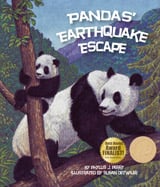Alignment to Standards for NC

| Grade | Number | Standard |
|---|---|---|
| 1 | SC:1.L.1 | characteristics of various environments and behaviors of humans that enable plants and animals to survive. |
| 1 | SC:1.L.1.3 | Summarize ways that humans protect their environment and/or improve conditions for the growth of the plants and animals that live there. (e.g., reuse or recycle products to avoid littering.) |
| 1 | SS:1-5.02 | Investigate key features of maps. |
| 1 | SS:1-5.07 | Explore physical features of continents and major bodies of water. |
| 2 | SC:2.L.1 | Understand animal life cycles. |
| 2 | SC:2.L.1.1 | Summarize the life cycle of animals: birth, developing into an adult, reproducing, aging and death, |
| 2 | SC:2.L.1.2 | Compare life cycles of different animals such as, but not limited to, mealworms, ladybugs, crickets, guppies or frogs. |
| 2 | SC:2.L.2.1 | Identify ways in which many plants and animals closely resemble their parents in observed appearance and ways they are different. |
| 2 | SS:2-5.02 | Describe the role of a geographer and apply geographic tools, such as maps, globes, compasses and photographs, in the understanding of locations and characteristics of places and regions. |
| 2 | SS:2-5.03 | Compare and contrast the physical features of communities and regions. |
| 2 | SS:2-5.05 | Interpret maps, charts, and pictures of locations. |
| 3 | SC:3.L.2.2 | Explain how environmental conditions determine how well plants survive and grow. |
| 3 | SS:3-4.01 | Distinguish between various types of maps and globes. |
| 4 | SC:4.E.2.3 | surface of the earth changes due to slow processes such as erosion and weathering, and rapid processes such as landslides, volcanic eruptions, and earthquakes. |
| 4 | SC:4.L.1 | effects of environmental changes, adaptations and behaviors that enable animals (including humans) to survive in changing habitats. |
| 4 | SC:4.L.1.2 | how animals meet their needs by using behaviors in response to information received from the environment. |
| 5 | SC:5.L.1 | structures and systems of organisms perform functions necessary for life. |
| 5 | SC:5.L.2.2 | Classify the organisms within an ecosystem according to the function they serve: producers, consumers, or decomposers (biotic factors). |
| 5 | SC:5.L.3 | Understand why organisms differ from or are similar to their parents based on the characteristics of the organism. |
| 5 | SC:5.L.3.2 | Give examples of likenesses that are inherited and some that are not. |
| K | SC:K.L.1 | Compare characteristics of animals that make them alike and different from other animals and nonliving things. |
| K | SC:K.P.2.1 | Classify objects by observable physical properties (including size, color, shape, texture, weight and flexibility). |